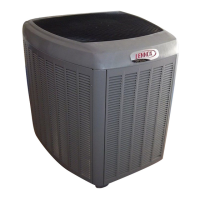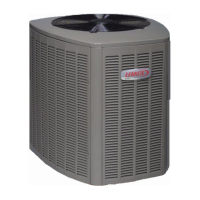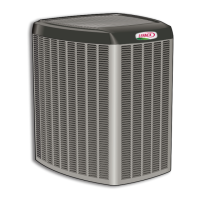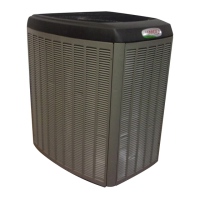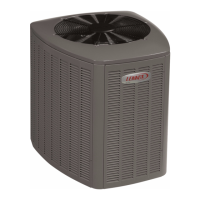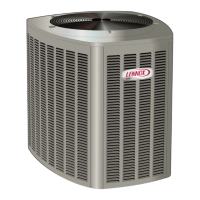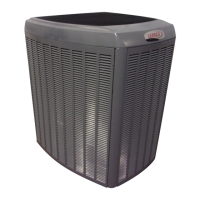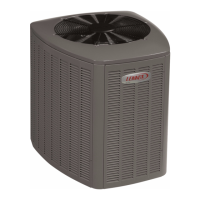Page 15
XC14 SERIES
6. Attach the suction line sensing bulb in the proper
orientation as illustrated in figure 27 using the clamp
and screws provided.
NOTE − Insulating the sensing bulb once installed may be
required when the bulb location is external to the coil
casing.
ON 7/8" AND LARGER LINES,
MOUNT SENSING BULB AT
EITHER THE 4 OR 8 O’CLOCK
POSITION. NEVER MOUNT
ON BOTTOM OF LINE.
12
ON LINES SMALLER THAN
7/8", MOUNT SENSING BULB
AT EITHER THE 3 OR 9
O’CLOCK POSITION.
12
BULB
SUCTION LINE
SUCTION LINE
NOTE − Never mount on bottom of line.
BULB
BULB
BULB
Figure 27. TXV Sensing Bulb Installation
7. Remove and discard either the flare seal cap or flare
nut with copper flare seal bonnet from the equalizer
line port on the suction line as illustrated in figure 28.
IMPORTANT
When removing the flare nut, ensure that the copper
flare seal bonnet is removed.
SUCTION LINE
FLARE NUT
COPPER
FLARE SEAL
BONNET
MALE BRASS EQUALIZER
LINE FITTING
FLARE SEAL
CAP
OR
Figure 28. Copper Flare Seal Bonnet Removal
8. Connect the equalizer line from the TXV to the
equalizer suction port on the suction line. Finger
tighten the flare nut plus 1/8 turn (7 ft−lbs) as illustrated
in figure 23.
See the XC14 Engineering Handbook for approved TXV
indoor/outdoor unit match−ups and application
information. Table 4 lists both the Lennox catalog and part
numbers for the TXV kit required for each unit model.
Figure 29 illustrates the kit components and quantities.
Table 4. Indoor Unit TXV Kits
Model Catalog Number Part Number
−018, 024, 030 and 036 37L51 37L5101
−042 39L72 39L7201
−048 and 060 91M02 100188−02
Use the Lennox catalog number to order a TXV kit.
The indoor unit TXV kit includes the following components:
TXV (1)
COPPER
MOUNTING
STRAP (1)
HEX HEAD BOLTS
AND NUTS (2)
TEFLON
RINGS (2)
Figure 29. TXV Kit Components
Testing for Leaks
After the line set has been connected to both the indoor
and outdoor units, check the line set connections and
indoor unit for leaks. Use the following procedure to test for
leaks:
IMPORTANT
Leak detector must be capable of sensing HFC
refrigerant.
WARNING
Refrigerant can be harmful if it is inhaled.
Refrigerant must be used and recovered
responsibly.
Failure to follow this warning may result in personal
injury or death.
WARNING
Fire, Explosion and Personal Safety
Hazard.
Failure to follow this warning could
result in damage, personal injury or
death.
Never use oxygen to pressurize or
purge refrigeration lines. Oxygen,
when exposed to a spark or open
flame, can cause damage by fire and/
or an explosion, that could result in
personal injury or death.
1. Connect an HFC−410A manifold gauge set high
pressure hose to the suction valve service port.
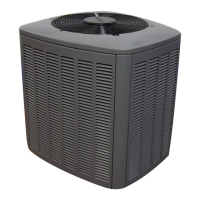
